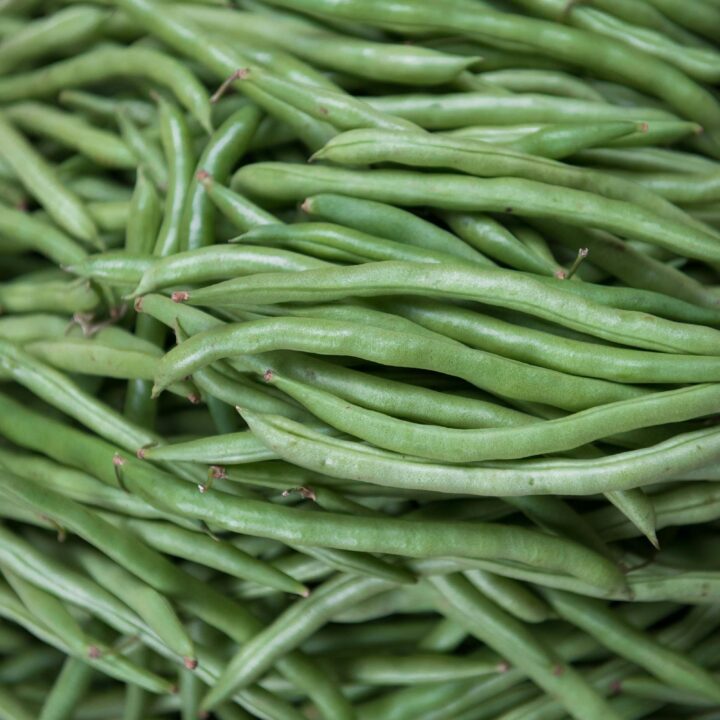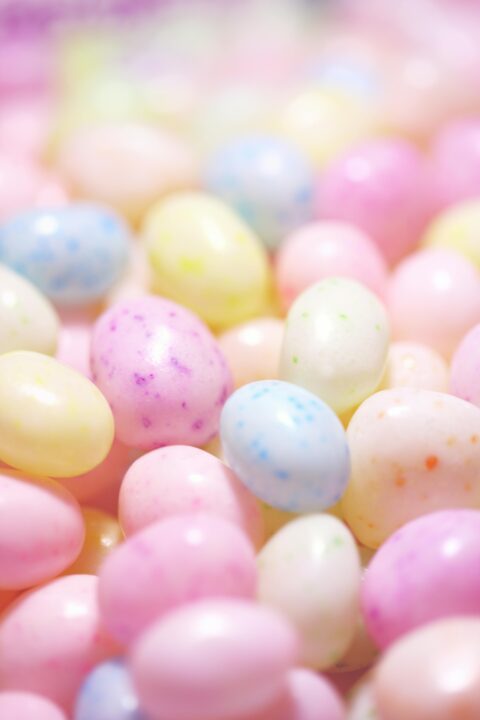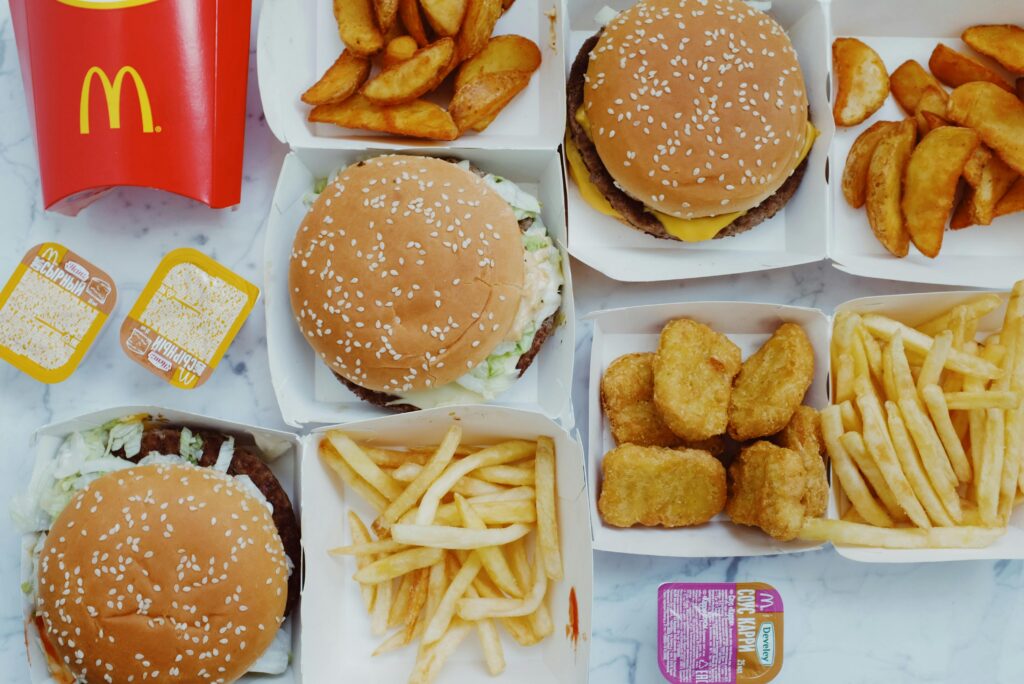Green beans are one of the most popular vegetables for the garden. They’re wonderful because, no matter your gardening method, there’s usually a way to incorporate green beans.
Green beans come in two main varieties: bush and runner, sometimes referred to as pole beans. Bush beans are known for remaining lower to the ground and forming a shrub-like plant.
Runner green beans are known for vining and sprawling. They can be grown on a trellis or even planted next to corn. If you train the plants, they should grow the corn and utilize it as a natural trellis in the garden.
Green beans are botanically identical to dry beans or cooking beans, meaning they’re the same type of plant with the same genus and species. The difference is that green beans are picked before their seeds mature, while cooking beans are allowed to ripen fully.
Different Types Of Green Beans
1. Blue Lake
This is a bush bean variety which produces 6-inch green beans. This is one of the most traditional varieties of green beans and what most people think of when pondering over this vegetable.
The Blue Lake Bush green bean is easy to grow, requiring little more than full sun and fertile soil. Blue Lake Bush beans mature at a uniform rate, meaning a whole crop can be ready for freezing or canning at the same time.
2. Royal Burgundy
Royal Burgundy is an heirloom green bean. This type of bean produces stringless pods that are known for remaining tender. Royal Burgundy beans are a bush bean variety which is great for growing in small spaces or containers. Expect the beans to be approximately 6-inches long.
3. Jade Green Beans
Jade green beans are another bush bean variety. This plant also produces 6-inch beans that have a tender texture and sweet flavor. Jade green beans are stringless, which is another reason why people love them so much.
4. Fortex Beans
Fortex beans are a French-style pole bean. This plant produces longer beans that average around 10-inches in length. These beans are known for being stringless, tender and crisp (instead of shelly) when they reach full maturity.
5. Contender
This variety produces 6-inch-long beans in as little as six weeks. This is another bush bean variety, which makes it a great choice for different gardening methods.
6. Scarlet Runner
Scarlet runners are grown for both aesthetics and for food. They were once an extremely common plant in the garden but took a backseat for a few years. Now, they’re making a comeback.
You may enjoy the edible flowers and the beans if they are boiled, baked or steamed. This is a pole variety that’s ready for harvest in under three months.
7. Rattlesnake
Rattlesnake beans are an heirloom variety that’s considered a pole bean. This type of plant requires support but should be ready for harvest in a little over two months. The pods typically grow to be 7-inches long and are stringless.
8. Provider
Provider green beans are known for producing large quantities of beans and also for being durable plants that stand resistant to many diseases.
These beans are able to ward off both fungal and bacterial issues. This is a bush variety of plant that produces beans averaging about 5-inches in length.
9. Tendergreen
Tendergreen is a bush bean variety which is a favorite for freezing and canning. This plant produces pods that are approximately 6-inches in length and stringless.
The tendergreen variety is known for producing a harvest in under two months and for being disease-resistant. It is an excellent choice if you want to put fresh green beans on your table in hot weather.
Also, if you want to have a meaty, stringless green bean available throughout the year, the Tendergreen is noted for its success as a frozen green bean.
10. Maxibel
Maxibel is a flavorful and productive haricot-verts-type bush green bean. It produces long, thin pods and matures in a medium length of time.
Known for their amazing taste, Maxibel beans do require some special attention in the home garden to be fully enjoyed. To ensure that you’re getting the best of these exceptional green beans, you should pick them early and often.
11. Goldilocks
Goldilocks is a variety of medium round yellow/golden bean that produces well, resists some diseases, grows on a strong upright bush-type plant and matures quickly.
12. Trebona Romano
Trebona Romano is a flat-podded green pole bean that produces over a long harvest window, tastes great and matures early for a pole bean.
13. Kew Blue
Kew blue is a flat, purple-podded pole bean that is just beautiful, tastes great, produces well over a long period of time, and matures early for a pole bean.
14. Kentucky Wonder Favored Pole Green Bean
Another heirloom green bean with an enthusiastic following is Kentucky Wonder, a pole bean with vines that can stretch to eight feet high.
The Kentucky Wonder pole bean is ranked as moderately easy for the home gardener to bring in a crop. It is renowned for its reliability in producing beans that can be enjoyed fresh, frozen or canned.
In addition, the seeds inside a Kentucky Wonder pole bean can be dried to become a prime bean for baking.
Health Benefits Of Green Beans
While green beans may be low in calories, they contain many important nutrients that provide several health benefits. The legumes are full of antioxidants, including vitamin C, flavonols, quercetin, and kaempferol. These antioxidants fight free radicals in the body, which helps reduce cell damage and may lower your risk of certain health conditions.
Other health benefits of green beans include:
1. Improve heart health
Green beans are full of fiber, which is an important nutrient for many reasons. Soluble fiber, in particular, may help to improve the health of your heart by lowering your LDL cholesterol (bad cholesterol) levels.
2. Protect Gut Health
The fiber in green beans helps to keep your digestive system healthy and running smoothly. If you have a digestive disorder like irritable bowel syndrome, however, certain types of fiber can do more harm than good, leaving you with gas, bloating, and intestinal discomfort.
3. Aid in a Healthy Pregnancy
A single cup of green beans has approximately one-third of your daily recommended intake of folate, a B vitamin that’s necessary for the growth and development of unborn babies. The vitamin helps to reduce the risk of certain birth defects. Women who are pregnant need to take in more folate than those who aren’t. Whereas most adults need 400 mcg daily, women who are pregnant need 600 mcg, and those who are nursing need 500 mcg.
4. Protect Bone Health
Green beans are high in vitamin K, and they also contain a decent amount of calcium. These nutrients are important for maintaining strong, healthy bones and reducing your risk of fractures.
5. Reduce Depression Symptoms
Getting enough folate isn’t just important during pregnancy. The B vitamin is also important for reducing depression. Getting enough folate helps to reduce the amount of homocysteine in your body. Too much homocysteine can interfere with your natural production of serotonin, dopamine, and norepinephrine, hormones that regulate your mood as well as your sleep and appetite.
6. May Help with Anemia
Iron is an essential part of the red blood cells that transport oxygen from the lungs to all of the other cells throughout your body. Insufficient iron intake can lead to anemia, which is characterized by fatigue, weakness, and lightheadedness. Green beans provide a decent source of plant-based iron that can help ensure that you get the amount you need to avoid anemia.
7. May Help Prevent Cancer
Green beans contain chlorophyll, which may help to slow the growth of cancer tumors and reduce the risk of cancer. Many of the current studies, however, use animals. More research is needed to confirm the anti-cancer benefits of chlorophyll.
Conclusion
Green beans, like many other vegetables, offer a range of essential nutrients that can contribute to overall health and well-being. These vibrant pods are a great source of vitamins and minerals, including vitamin C, vitamin K, and folate.




